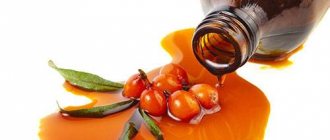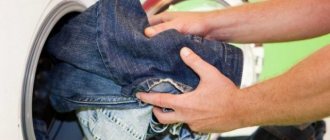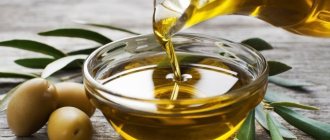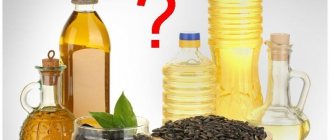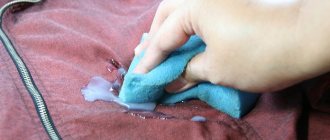Cooking and cosmetic procedures can leave traces that force you to rack your brains about how to get rid of oily stains on clothes, towels or furnishings. Recognized and actively used by chefs and cosmetologists, olive oil leaves difficult-to-remove stains on clothing items. A small drop of vegetable oil, falling on the fabric, spreads to an impressive size. What measures should be taken to prevent the stain from becoming an old stain? How to deal with olive oil stains when the oil has had time to be absorbed into the fabric fibers and dry out? There are many ways to remove contaminants from sunflower, sea buckthorn, soybean and olive oils, which are actively used by experienced housewives in the fight for cleanliness.
Why you need to hurry
Oil stains on your favorite things are depressing. Sloppy, sloppy and difficult to remove... The sooner measures are taken, the greater the chances of a positive result.
Why you shouldn't wait:
- Oil is characterized by high fluidity, so when it gets on the fabric, a drop of it tends to take up as much space as possible. The stain spreads further and further.
- The oil oxidizes and dries as it goes through the polymerization stage. After this, it will be very difficult to get rid of the contamination.
Dust particles begin to stick to the stain, which only complicates the situation. Such a stain can already be washed only with organic solvents, which include acetone, gasoline, kerosene and ethyl alcohol.
There are many products available to remove vegetable oil stains.
The choice of method is determined by the type of material and capabilities.
Having noticed a stain, you can first sprinkle salt on the stain, rub it lightly and wait 10 minutes. Laundry soap will also work. At the end, the product must be machine washed.
Of course, ideally you should take the item to dry cleaning. Washing can't always save you. For example, if trouble happened at a party, you will have to use other methods.
You can remove vegetable oil from clothes using:
- table salt;
- dishwashing gel;
- mustard powder;
- soda;
- gasoline and solvents;
- stain removers;
- soap and washing powder.
These folk remedies are time-tested. Each of them can help.
How to wash technical oils
Technical or machine oils are a base and additives added to it (special substances that improve the properties of the base). They are usually dark in color and leave oily brown stains that are difficult to remove on clothing. Removing machine oil stains from silk, acetate and other fabrics is much more difficult than vegetable oil stains.
They can also be eliminated using solvents and household chemicals.
Kerosene
This is a more aggressive product, but it will work very well on machine oil stains.
- Apply the liquid to a cotton swab, generously lubricate the stain and leave for half an hour.
- Then rinse off and wash in soapy water.
Salt, soda and mustard
Having noticed an oil stain, you need to immediately sprinkle it with fine table salt, it absorbs fat remarkably, sometimes after this manipulation not a trace remains of the contamination.
The finer the salt, the better the result. If possible, you can cover the salt with a paper towel and iron the area with a hot iron.
Mustard powder will also help remove stains from vegetable oil. You need to mix a little with water, achieving a mushy consistency. The resulting composition is applied to the site of contamination.
Dried mustard is removed with a soft brush, and the item is washed.
As for baking soda, it has a dual effect on oil stains. Being an alkali, it also absorbs oil due to the breakdown of fat. It is necessary to rub the soda into the material with a brush and leave for half an hour. This method works well on suede fabrics and is also effective for cleaning shag carpets that cannot be machine washed.
Soda can be replaced with tooth powder. It contains chalk, which perfectly absorbs various substances.
Effective ways
There are many ways to remove sunflower oil stains, and the choice among them is determined by the type of fabric, capabilities and availability of the necessary products.
What can you do first?
A foolproof way to remove oil stains from pants, T-shirts, or other clothing.
Unfortunately, washing is not always the solution. A simple example - you are visiting. Other methods are needed here. Proven folk methods come to the rescue that will help you quickly remove all kinds of greasy stains from any thing, be it a jacket or pants, a towel or a tablecloth.
Salt
A time-tested way to reduce contamination is to immediately sprinkle the problem area with fine table salt. Table salt absorbs oil perfectly and in some cases the stain can practically disappear. The finer the grind, the better the effect. If possible, place a paper napkin on top of the salt and iron with a hot iron.
Dish detergent
You can quickly remove a greasy stain from any fabric by manually washing the stained area in water to which ordinary dishwashing detergent has been added. Most of these drugs are designed to break down any fats at normal temperatures. A few minutes of washing will help return things to their original appearance. Just do not use all kinds of cleaners for ovens, stoves, grills and the like, which contain aggressive chemical additives that are guaranteed to ruin your clothes. Colored fabrics, including jeans, can be especially affected. The method can be considered optimal when cleaning things that are used in the kitchen. This is how an apron or towel often becomes a victim of oil and the easiest way is to solve the problem right on the spot without wasting time.
Mustard powder
Mustard works well on stains. Mix a small amount of powder with water to form a thick paste and apply to the contaminated area. After drying, the mustard is cleaned with a soft brush. The clothes are then washed as usual.
Baking soda
Baking soda acts on greasy stains in two ways - it absorbs excess oil and by breaking down fat, since it is an alkali. To remove stains, thoroughly rub soda into the surface with a brush, and after 15-30 minutes I remove it. This method cleans suede well. It also washes carpets with pile that cannot be thrown into the washing machine. Instead of soda, you can use tooth powder, which also contains chalk, which absorbs various substances well.
Gasoline and solvents
You can clean cotton fabric using solvents, gasoline or kerosene. The effect is achieved when gasoline is mixed with potato starch and the mixture is applied to a stain on the fabric. It is important to know that it is not recommended to use motor gasoline.
You should only use refined gasoline or kerosene, which are sold in hardware stores, and the best option is lighter fuel.
Cleaning with flammable liquids is as follows. Place a piece of clean cloth under the area of clothing to be cleaned, generously moisten the stain with gasoline or acetone and iron the top with an iron through a paper napkin. Be careful! Gasoline, and especially acetone, are highly flammable liquids. In addition, acetone is very volatile and simply rubbing the stain will not work, since it will evaporate quickly.
This technique is used only on light cotton fabrics, but it will help remove even old greasy stains that cannot be washed with regular washing. Contact of gasoline or acetone with paints or synthetics can lead to irreparable consequences. Raincoat fabric will easily fall apart under the influence of a solvent, especially if the material is not of high quality.
A gentle solvent is ethyl alcohol. Of course, it works somewhat worse than gasoline, but it has an undeniable advantage - after drying it has absolutely no odor. If it is not available, use vodka, but not tinctures, which contain a lot of other things besides alcohol.
Stain removers
The use of all kinds of stain removers also occurs when cleaning things. The main thing is to comply with the manufacturers’ requirements for fabrics and follow the instructions. All cleaning products contain surfactants, fat breakers and other additives that cope with most known contaminants.
At home, you can prepare a simple stain remover that can remove even old oil stains. Mix pure gasoline, ethyl alcohol and ammonia in equal proportions. The resulting mixture is applied to the stain for a period of 15 minutes to an hour and a half, depending on the degree of contamination. After exposure, the clothes are rinsed in cold water. If the result is unsatisfactory, repeat the procedure or try to clean things in a different way.
Soap and washing powder
Using laundry soap or washing powder, you can wash away stains caused by spilled oil on the carpet. It is difficult to remove fat from dense and fleecy items because they are capable of absorbing a significant amount of liquid.
First, moisten the area around the stain with water to prevent it from spreading further. Now you need to carefully blot the center of the stain with a clean napkin until no greasy dirt remains on it, after which water is applied to the stain itself. To remove grease, soak a stiff clothes brush in warm water, rub a bar of soap with it, or lightly sprinkle the carpet with laundry detergent and vigorously rub the pile with a brush until a thick foam forms. Rinse off the detergent with water to ensure that the grease is gone.
In order not to spoil the floor covering, which is afraid of water getting in, place a layer of oilcloth under the carpet, and then a piece of clean cloth.
Dishwashing liquid
You can try washing the problem area in water with dishwashing gel.
As a rule, such compositions break down any fats. By spending very little time, you can solve the problem and return the product to its original appearance. Just don’t experiment with certain cleaners for stoves, ovens and grills. Typically, such products include aggressive chemical additives that can harm tissue. Such compositions are most dangerous for colored materials, including jeans.
Dish soap can be an ideal option for cleaning items in the kitchen. For example, a towel or apron often becomes victims of oil contamination. You can quickly solve the problem on the spot, because in the case of such stains, every minute counts!
How to remove stains that won't wash off?
First: place the soiled item in hot milk or whey for 30 minutes and wash with soap. Second: Wipe the stain with a hydrogen peroxide solution (1 teaspoon of hydrogen peroxide in half a cup of water) and rinse with cold water. This method is only suitable for white products.
Interesting materials:
Do lilies need to be watered when planting? Do you need to fully straighten your arms when doing pull-ups? Is parental permission required for a child to travel abroad? Do I need to register a loan agreement? Do you need a work book now? Do I need to mow strawberry leaves? Do I need to remove the film from polycarbonate on both sides? Should I install a carpet in the kitchen? Do I need to remove the lower leaves of tomatoes? Do you need to boil butter before frying?
Gasoline and solvents
You can remove vegetable oil stains from cotton using gasoline, kerosene and solvents. To achieve the result, you need to mix gasoline with potato starch and cover the problem area with the product.
It is noteworthy that the use of motor gasoline is not recommended:
- it contains toxic additives;
- the substance leaves traces that are difficult to remove;
- It is very difficult to get rid of its unpleasant aroma.
It is allowed to use only purified gasoline and kerosene, which can be purchased at hardware stores. The ideal option is lighter fuel.
If you want to use a flammable liquid, you need to place a small piece of clean cloth under the stain on your clothing, moisten the stain well with acetone or gasoline, and iron it through a paper napkin.
Care must be taken not to forget that such liquids are highly flammable. It is important to remember that acetone is very volatile, and in the case of it, simply rubbing the stain will not work, since it will evaporate quickly.
This technique is only suitable for light cotton material, but it is capable of eliminating even old stains that do not disappear after regular washing. It is not recommended to clean synthetic fabric or dyed material with acetone or gasoline. Such manipulations are fraught with the most unexpected consequences.
For example, contact of a solvent with a raincoat will cause the fabric to simply fall apart, especially if it is not of the highest quality.
Ethyl alcohol can be called a gentle solvent. It does not work as well as gasoline, but after drying the substance does not stink, this is its key advantage. If there is no ethyl alcohol, it can be easily replaced with vodka. But it’s better not to take tinctures, because they contain not only alcohol.
What not to do
When getting rid of a stubborn stain, you also want to avoid harming your clothes. For many, the first reaction to olive oil getting on fabric is to place the item under hot water and wash it. However, water will not dissolve the oil. It will make it a little lighter, and the high temperature will help the stain spread.
It is also worth understanding that stain remover and bleach are two different things. The first one dissolves and removes fat and other contaminants. The second one makes the fabric lighter, but has no effect on oil marks. If you try to remove a stain with it, the mark will remain. But the fabric, if it is colored or synthetic, will suffer.
Using kitchen grease removers is also a risky method. The product will, of course, dissolve the oil, but how it will affect the fabric is unknown. They contain aggressive chemical compounds that can dissolve carbon deposits, soot, and old traces of fat. If there is no other choice, you should try the drug on an inconspicuous area of tissue.
Using stain removers
Sometimes a stain remover helps remove vegetable oil stains from clothes. It is important not to violate the manufacturers' requirements for the material and act based on the instructions. All cleaning products contain fat breakers, surfactants and other components that allow you to remove contaminants from sunflower or olive oil.
You can prepare the solution at home; a simple recipe allows you to eliminate even old stains.
To prepare the composition you will need pure gasoline, ammonia and ethyl alcohol. The product treats the problem area.
After applying the mixture to the stain, you need to wait from 15 minutes to an hour and a half. It all depends on how severe the pollution is. Next, the item is thoroughly rinsed in cool water. If the result is not satisfactory, you should repeat the procedure or switch to a different method.
Useful tips
To make the entire process of cleaning and further washing as easy as possible, it is recommended to use some tips:
- Dried and old fat deposits will require more time to remove than fresh ones. It is recommended to clean items immediately when dirt gets into them.
- Initially, it is better to wash by hand, and then use the machine method.
- Fat should be removed with smooth, careful movements so as not to rub it into the fabric. Otherwise, the result may be even worse, because the defect will become larger and absorb more strongly.
- If the fabric is thick, for example, denim, or a jacket is being cleaned, then you will need to wipe off marks on both sides of the material.
- If things are very expensive, then it is recommended not to conduct experiments, but to leave it in the reliable hands of specialists.
If it is impossible to wash items using the methods described, you will need to use dry cleaning services.
It doesn’t matter if yellow stains appear on your down winter jacket after an unsuccessful wash. It happens that you have to wash vomit stains from upholstered furniture or clothes, and it is very difficult to clean a mattress from red stains and the smell of urine, but there are methods. You can, Removing stains is always a long and labor-intensive process, especially if it concerns traces of food or
Washing powder and laundry soap
You can remove vegetable oil from the carpet with soap and washing powder.
It is difficult to restore the original beauty of fleecy and dense things, because they absorb liquids well. First, you need to moisten the area around the stain to prevent further spreading. Next, you need to carefully blot the center of the contamination with a paper napkin until no greasy marks remain there. The next step is to apply water directly to the stain itself.
To get rid of grease, you should wet a stiff clothes brush with warm water and rub the soap with it. You can also sprinkle a little washing powder on the floor covering and rub the surface with a brush until a thick foam appears. At the end, the cleaning agent is washed off with water.
Carpet products are usually afraid of water. In order not to spoil the thing, you need to put oilcloth and a clean cloth under the carpet.


